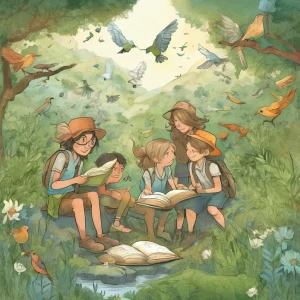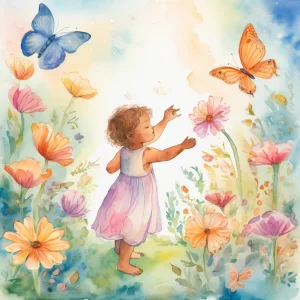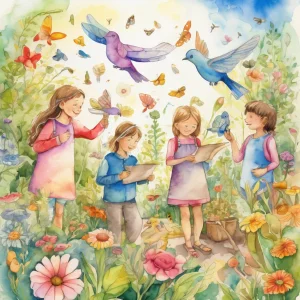Activity
Similar Activities
Empathy Harmony: Musical Language Exchange Adventure
Children’s Age: 11–15 years
Activity Duration: 35 – 45 minutes
The "Musical Language Exchange" activity is designed for children aged 11 to 15 to explore empathy through music, instruments, and foreign languages. Participants will engage with …
Activity Duration: 35 – 45 minutes
Seasonal Poetry: A Language Exploration Journey
Children’s Age: 6–10 years
Activity Duration: 30 minutes
Explore the "Language Exploration Through Seasonal Poetry" activity to enhance children's communication and empathy skills through seasonal poems. Gather materials like poems, pape…
Activity Duration: 30 minutes
Enchanted Seasons: Seasonal Nature Hunt
Children’s Age: 6–10 years
Activity Duration: 25 – 30 minutes
"Seasonal Nature Hunt" is a delightful activity designed for children aged 6 to 10, focusing on cognitive development, nature appreciation, and logical reasoning. Kids can explore …
Activity Duration: 25 – 30 minutes
Seasonal Wonders: Digital Animation Showcase
Children’s Age: 12–16 years
Activity Duration: 35 minutes
Engage children aged 12 to 16 in the "Digital Seasonal Animation Showcase" to create digital art and animations while enhancing cognitive skills and ecological awareness. Set up wi…
Activity Duration: 35 minutes
Enchanted Nature Walk and Plant Exploration Adventure
Children’s Age: 5–6 years
Activity Duration: 15 – 25 minutes
Let's go on a Nature Walk and Plant Exploration adventure! Get ready with comfy shoes, sunscreen, hats, water, and maybe paper bags, magnifying glasses, and a plant guide. Find a s…
Activity Duration: 15 – 25 minutes
Sensory Music-Making Session: Sound Story Drawing Adventure
Children’s Age: 2–2.5 years
Activity Duration: 5 – 20 minutes
A sensory music-making activity using household items to enhance sensory development and introduce children to the world of music.
Activity Duration: 5 – 20 minutes
Enchanted Tales: Family and Friends Story Theater
Children’s Age: 2–7 years
Activity Duration: 10 – 25 minutes
An interactive storytelling activity promoting language, academic, and social development.
Activity Duration: 10 – 25 minutes
Nature Language Exploration and Journaling Adventure
Children’s Age: 4–12 years
Activity Duration: 15 – 30 minutes
Let's go on a Nature Journaling Adventure! We'll explore nature, practice writing, and learn new words in a foreign language. Grab your nature journal and pencils, and if you like,…
Activity Duration: 15 – 30 minutes
Enchanted Nature Walk: The Sensory Adventure
Children’s Age: 1–1.5 years
Activity Duration: 10 minutes
Engage your 12 to 18-month-old in the Sensory Nature Walk to boost their language, sensory, and social skills through outdoor exploration. Prepare for the adventure by dressing you…
Activity Duration: 10 minutes
Enchanted Forest: Nature's Treasure Hunt Adventure
Children’s Age: 11–15 years
Activity Duration: 30 – 45 minutes
Explore the wonders of the outdoors with "Nature's Treasure Hunt," a fun and educational activity for children. This outdoor adventure boosts play skills, academic knowledge, and s…
Activity Duration: 30 – 45 minutes
Seasonal Textures: Infant Sensory Exploration Activity
Children’s Age: 3 – 6 months
Activity Duration: 10 minutes
Engage infants aged 3 to 6 months in a sensory exploration activity focusing on seasonal textures for motor, adaptive, and language development. Gather soft fabric swatches, natura…
Activity Duration: 10 minutes



























